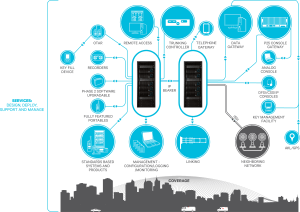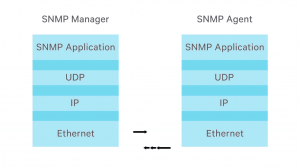Introduction to P25
P25 Network Architecture
P25 Linking Infrastructure
The linking infrastructure is what interconnects repeaters, controllers and dispatch equipment to form a radio network. In recent years, we have seen increasing momentum for the transport of voice and data applications within the same network, and the progressive replacement of TDM networks by IP networks.
Because P25 voice is already in a digital format, it is easy to transport over an IP network. Therefore, the sites and equipment in a P25 network are typically linked using IP technology.
There are many advantages of this approach:
- The linking of the structure uses standard internet engineering task force, or IETF protocols, and avoids proprietary hardware and software implementations.
- This allows the use of off-the-shelf hardware, reducing costs and ensuring the ongoing availability of equipment.
- It provides the openness and interoperability to interface with external applications, and allows the use of routing protocols with redundant paths, strengthening communication reliability.
- It also allows the use of protocols such as SNMP, and web-enabled applications and interfaces for network management.
Using IP linking also provides a future-proof linking platform that is ready to support future data applications as well as providing the ability to utilize existing IP links that have spare capacity, and results in lower maintenance costs, as only one linking infrastructure for both voice and data needs to be maintained.
In larger organizations, the team that managed the computer network may take on the responsibility for the radio network linking. This can work very well, but will require the networking team to understand the requirements for real-time voice, and the importance of certain links for voice communication. Where the radio equipment and the linking equipment are managed by different teams, a broader notification group for change management and fault reporting activities may be required.
Sharing voice and data on the same network does come with some risks. Real-time voice applications have strict quality of service requirements for bandwidth, delay, and jitter. This becomes more important if the network shares the same linking as other IP traffic at key locations, however, this can be effectively managed with QOS and security protocols, and capacity planning when the network is installed.
Standard IP protocols mean there are many ways to engineer the linking. The network could be dedicated to the radio system, or shared with other data applications. Each site could be a local area network with routing protocols used to link sites together, or the whole radio system could be constructed as one large local area network.
 Radio Academy
Radio Academy







